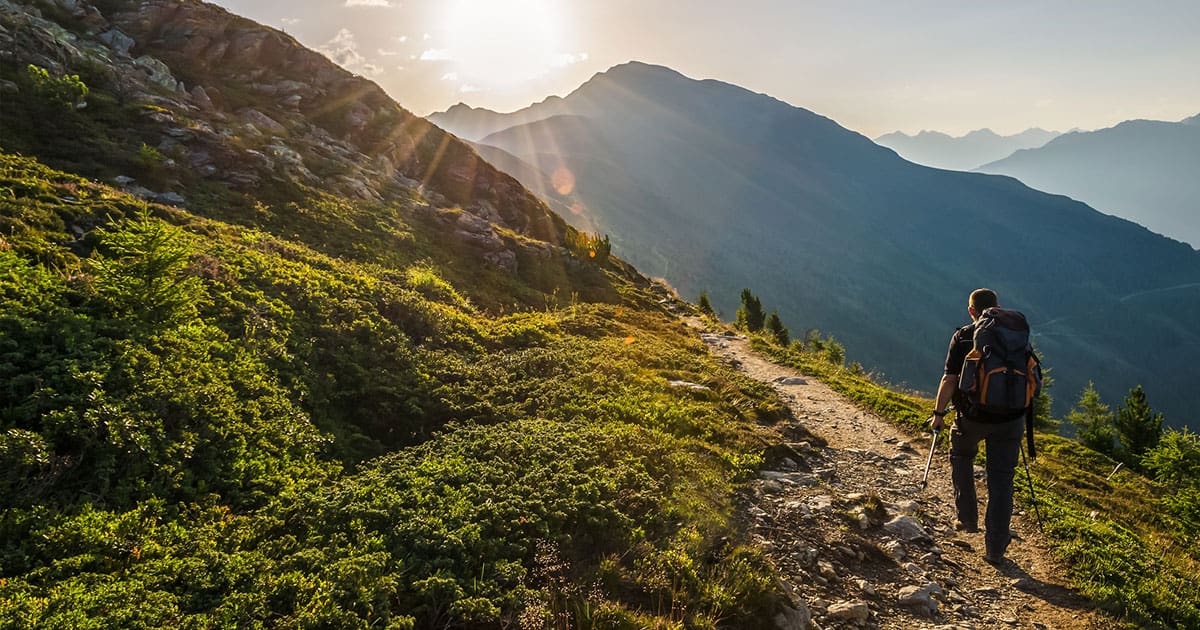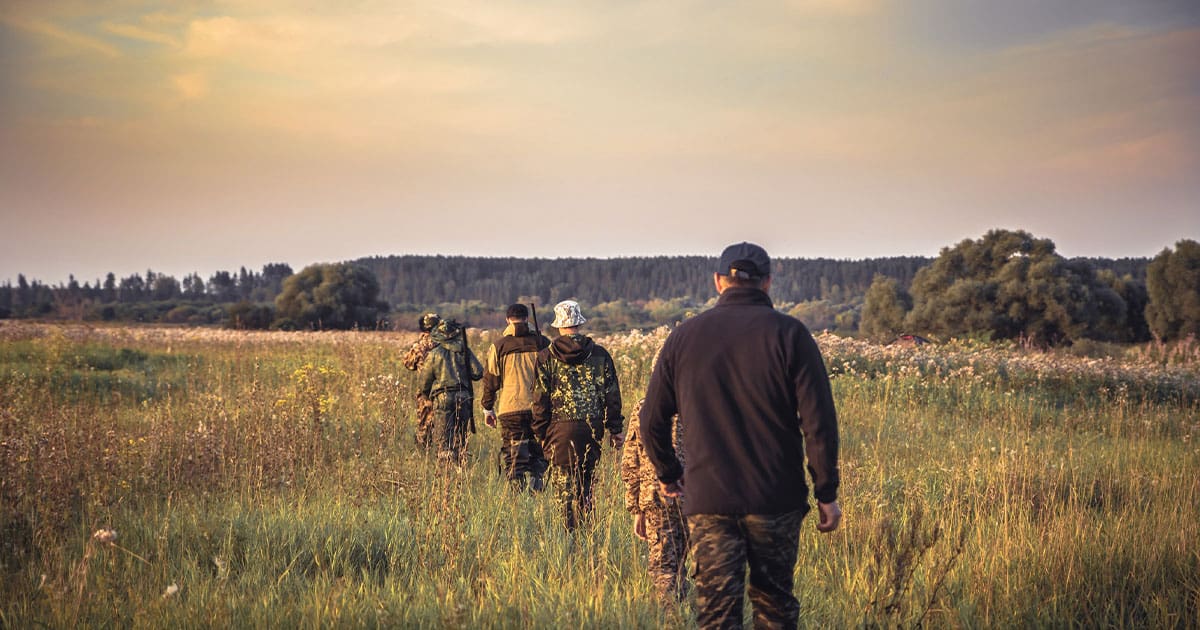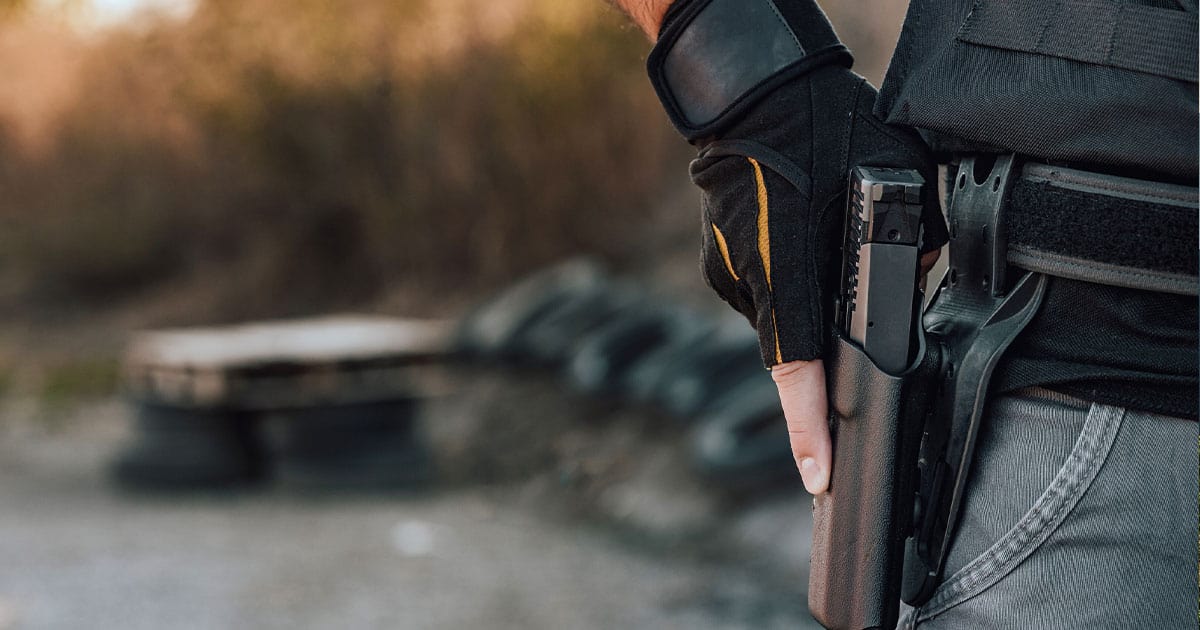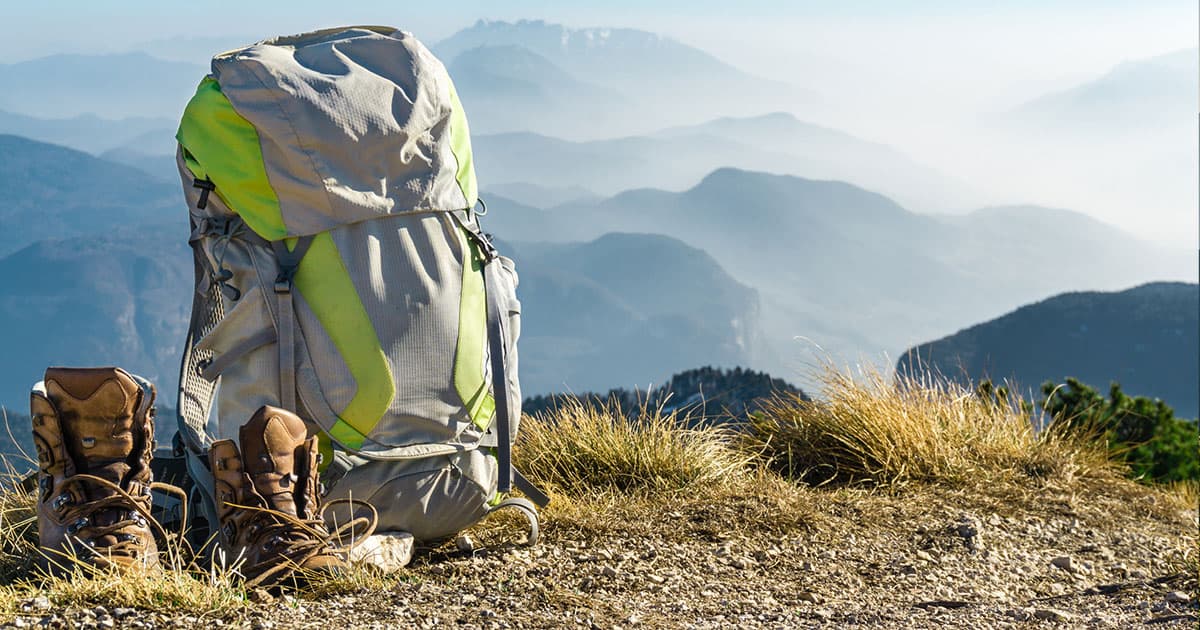
Hiking through breathtaking scenic paths and the remote backcountry can be a magical and life-affirming experience, that is, until you are face to face with a two or four-legged threat in the middle of nowhere without any help or protection.
In the worst-case scenario, when your life is being threatened, personal protection tools specially designed for outdoor use can save your life. But, as a last line of defense, is a firearm while hiking necessary?
While the statistics show that it is highly unlikely to be killed while hiking, some hikers may want that extra protection for peace of mind. In that case, practicing proper gun safety can help prevent accidents on the trail and keep you safe if you ever need to use it.
Do You Need a Firearm While Hiking? Pros and Cons
Hiking is a peaceful and meditative activity that can calm the mind in a fast-paced world. This image of tranquility can quickly vanish when you throw a gun into the equation.
If you are wondering whether you should bring a weapon such as a firearm for protection from threats on your hike, it may be helpful to consider the pros and cons and decide based on your unique needs.
Pros
- Protection from wildlife: Out in the wild, bears, coyotes, and mountain lions can usually coexist with humans until they do not. If you encounter a mom protecting her young, you may be seen as a threat. In this case, a gun can be a last resort when an animal is about to pounce.
- Protection from humans: From a creepy guy to a violent drug runner and everything in between, humans can pose a threat to your life when there is no one around for miles, especially if you are carrying high-end gear, money, or the keys to your car. You may be seen as an easy target. When push comes to shove, a firearm can scare off human predators.
- Hunting: During hunting season, you can go hiking while armed as long as you obtain a hunting license. If you have your hunting license and you can legally carry in the area, you may just be able to score some small and medium game to cook up or freeze dry.
Cons
- Weight: When you are hiking for miles or days on end, any bit of extra weight can compound the fatigue, stress, and pain. Even the lightest and most compact gun and ammunition can be too heavy for some hikers.
- Law: The patchwork of firearm laws across states, counties, cities, and parks vary, making it difficult to know where and when carrying a firearm is legal. You may end up breaking the law unintentionally if you are not aware of the gun laws in your area.
- Comfort: When holstered improperly, a hand gun can feel uncomfortable and dig into your skin and create friction which can irritate your skin, especially on a long trek. Having the right holster type and making a few practice runs can help improve comfort.
- Safety: While guns may be a tool for self-protection, they can work against us in some cases. If you are unsure how to use it, it can be used against you by someone else or it could result in a negligent or accidental shooting.

Basic Gun Safety Tips To Remember
In the great outdoors, hikers may encounter wildlife and human threats, but generally, you will just be enjoying the scenery and breathing in the fresh air. It is in these moments of safety and tranquility that you can let your guard down and lead to an accident.
Whether you are hiking at Rocky Mountain National Park or cleaning your firearm from the comfort of your own home, it is always wise to follow these basic gun safety tips:
- Always treat a gun as if it is loaded
- Always keep the muzzle pointed in a safe direction
- Keep your fingers away from the trigger until you are ready to shoot
- Be aware of what is around and behind your target
Keeping these basic safety rules in mind in any terrain can reduce the risk of injury while hiking. Ultimately, situational awareness can be the first line of defense to avoid any dangerous situations in the first place.
Hikers can also take a number of other precautions including informing a friend or family member about their itinerary. Personal protection items like a whistle, an air horn, and bear spray or pepper spray (for humans), and a knife can keep you safe.
Hiking Safely with Bear Spray In Grizzly Country

When you are hiking in the backcountry or a national park, wildlife can be dangerous if you have a close encounter. Knowing the types of wildlife around, where they are located, and how to approach the situation can help you be smart when the claws are out.
EPA-approved bear spray is your best protection. Keep in mind, some parks do not allow the possession of bear spray.
If bear spray is allowed for possession and use, keep it in a readily accessible area such as a belt or chest holster at all times. You may not be able to get to it if it is tucked away in a fanny pack or backpack.
Firearms are generally not recommended for stopping a bear attack. In fact, using a firearm can actually make matters worse. A bear can become more aggressive even when wounded. In addition, a gun can be dangerous to any other hikers nearby if used improperly.
If worse comes to worst and you are forced to use your firearm in self-defense against a bear, you must contact park authorities immediately. With limited exceptions, federal regulations prohibit discharging a gun in a national park.
Check State, County, and City Firearm Laws
Although you may feel safer with a gun by your side, some jurisdictions are not okay with open or closed carry. In national parks, possession of a firearm is allowed in parks and forests although there are some restrictions. Make sure to check with the park office to get the firearm regulations.
Also, you must consider the state, county, and city laws. State laws are not applicable on federal property. Some states allow handguns in state parks. Other states prohibit firearms in state parks. Getting caught with a firearm can lead to jail time.
If your journey involves crossing state borders or other jurisdictions, you will need to know the firearm restrictions in each jurisdiction. Do your research beforehand to ensure you remain compliant with the laws.
Firearm Training For the Great Outdoors
Having the proper firearm training for the exact gun you plan to use should be a prerequisite for bringing it along on your hike. Practice makes perfect so ensure that you are well-versed in how to handle the gun from unholstering it to cleaning it to firing it. There is no room for error.
In addition to firearm training, a situational awareness or self-defense class or even a bear safety and behavior course can help you avoid danger on your peaceful trek.
Hiking Alone or In a Group
They say there is safety in numbers, but sometimes, you just want some peace and quiet on your own or you just simply do not have a hiking companion to make the trek. Women, especially, have a greater fear and risk of encountering predators on the trails. Going in a group can offer greater protection but can also put more people at risk around a gun used unsafely.
Choose the Right Gun For Concealed or Open Carry
Whether you are going out in the woods or desert, it is important to consider the type of handgun you want to carry around depending on if it is just a basic hike or a multiple-day excursion.
Generally, many hikers who carry guns opt for lighter guns than they would normally carry outside of the hiking trail since it can add extra weight on top of the food, water, and other essentials.
So, what type of stopping power do you need for protection from a thief or a black bear? It depends. A subcompact .380 can be enough to stop a human threat, but this same level of stopping power is not the best option for an aggressive mamma brown bear.
If your main concern are grizzlies and black bears, bear spray may be your best form of protection, but if you do happen to want to carry a gun, choose one with a proper caliber such as a .44 magnum revolver or even a .357 mag.
Under the right circumstances, they can be properly concealed. This same level of stopping power is enough to put down other wildlife predators such as mountain lions and wolves. In this case, you could use 9 mm or .40 Smith & Wesson to do the job.
You should also consider the right type of ammo storage while you are out on the trails. If you have any additional rounds, make sure to keep them in a separate compartment readily available. Ideally, it should be waterproof to ensure that they do not get drenched in the rain or in nearby water sources.
Comfort First
Discomfort can be one of the main disadvantages of taking a gun while hiking. Whichever gun you choose to take out on the trails, it is important to make sure that it will remain comfortable in its holster and you endure carrying it throughout your journey. If not, it can cause pain due to heavy friction or an unbalanced gait depending on how you are carrying it.
Holster Protection

Whether you choose on-body or off-body carry (depending on the applicable laws), holstering your firearm at all times is critical to your safety. Even if you keep your gun in a backpack or fanny pack, make sure to keep it in a backpack gun holster so it does not move around as much inside and you know where to find it if you need it.
However, if you want to have the quickest access to your weapon while hiking, you will want to consider a traditional holster. In grizzly country, large guns may be harder to conceal. unless it is legal to open carry in the area.
Holsters while out on the trail can protect your firearm from dirt and debris. As your walking or running down through dirt or mud-filled terrain, you are exposing your gun to potential debris that can jam it up and cause a deadly accident.
It should go without saying but hikers should be well-versed in unholstering their gun safely and aiming and firing in a seamless fashion. Of course, practice regularly so that you are not caught off guard in the heat of the moment.
Chest Holsters
If hips holsters are not your thing, chest holsters like the Kenai chest holster are designed to sit comfortably and securely over your chest without interfering with any backpack or hip straps.
IWB and OWB
Inside-the-waistband holsters and outside-the-waistband holsters are more traditional methods of carry although they can interfere with a hip belt. These types are generally used for a day hike where you do not need a lot of gear.
How to Carry Guns In a Backpack While Hiking

If you plan to keep your firearm in your backpack for whatever reason, you may feel safe, but you also need to consider the many safety considerations of off-body carry. As always, it should be in a holster that has a trigger guard, preferably in a dedicated compartment.
If it is in the backpack, you must always be mindful to never drop the bag. In the wild, it can be especially vulnerable to a negligent discharge if dropped on a rock or other hard surface. In addition, be mindful of what you grab inside the backpack. You may be looking for your granola bar but end up pulling the trigger if it is not properly stored.
Firearm Maintenance
After your hike in the outdoors is complete, do not forget to perform the proper firearm maintenance to keep it in working order. When carrying a firearm on your body, you may end up sweating, especially near the leather-backed holster on your skin. Sweat may reach your firearm, so it is important to field strip and clean your firearm after every long excursion.
Carry Guns While Hiking? Shop US-Made Holsters at GFI
For all your open and concealed carry needs on your hike, GunfightersINC’s American-made holsters allow you to carry a handgun comfortably and safely. A blend of Kydex, leather, and nylon creates a holster with ultimate retention and comfort.
November 4, 2022
